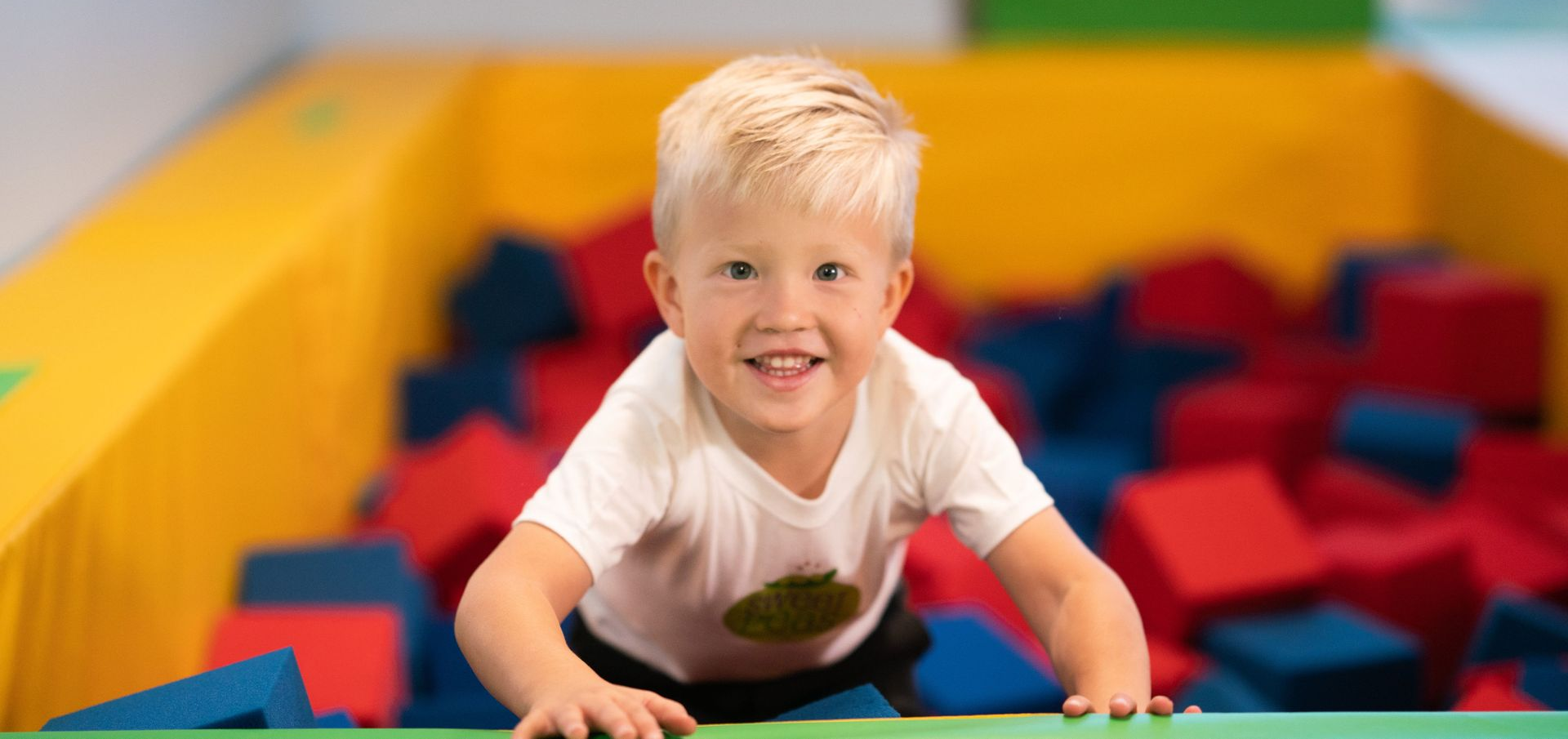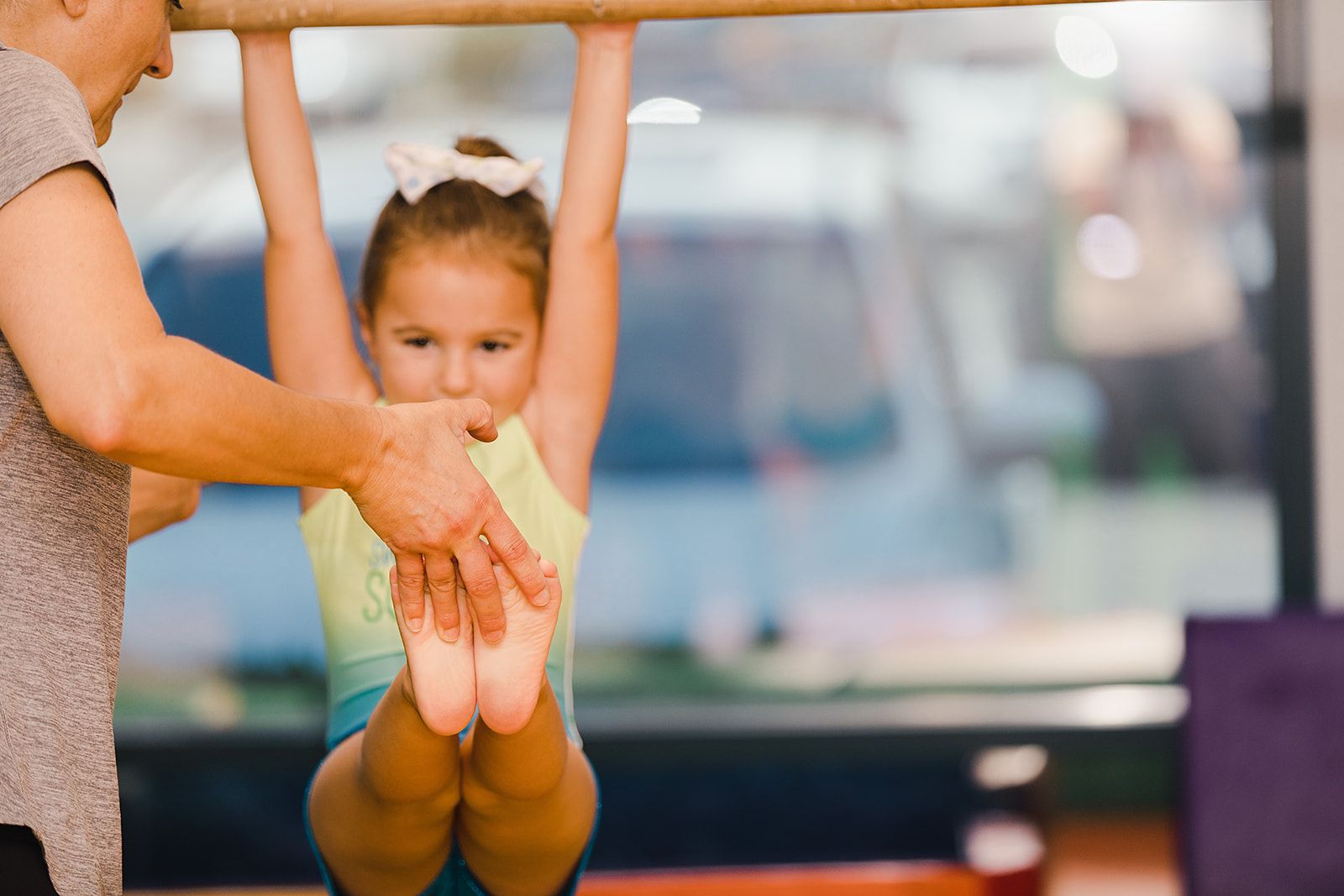Healthy Me!
October 29, 2025
The Sweet Pea Vine


THE SWEET PEA VINE
Is your three year old smarter than a broccoli spear?
It's crazy that something as important as a kid doesn't come with a user manual. Taking care of a human baby is hard. We start with such good intentions. Sometime between pureeing squash at midnight and brushing teeth three times a day, we find ourselves looking the other way when our two-year-old falls asleep in the car seat—with red licorice dribbling down her cheek. We might not get it right every time, but our children's health is still a top priority.
Here are 4 important categories of children's health:
1. GET ENOUGH SLEEP. Newborns sleep 15–16 hours a day. They break that up into ridiculously short 1–2 hour cycles, but the truth is, kids need a lot of sleep. 1–2 year olds need about 12–15 hours. 3–5 year olds need about 11–14 hours and 6–13 year olds need 9–11 hours. Sleep matters.
2. DON'T BE THE STINKY KID. Baby giraffes start walking, literally, 30 minutes after they're born. It takes 20 years for a human baby to learn to make their bed. We are a work in progress. Persistence and role modeling are key as we teach our children to brush and floss, scrub behind ears, trim nails and wear clean clothes.
Personal hygiene has social ramifications as well as physical. Clean habits will serve your child for life.
3. PLAY HARD. The best time to convince a person that they were born to be a totally dedicated physical active person for life is when they are 8 months old.
Teach your child to find active fun and to do it, regularly.
4. EAT HEALTHY FOODS: I am in awe of the parent whose child eats raw broccoli. Some parents manage a lifestyle of organic, perfectly balanced meals. For many, it is a daily battle... eat this ONE blueberry and I will let you eat that hot dog and we'll count candy corn as a vegetable. You've gone from pureeing squash at midnight to bargaining with candy corn.
Getting kids to eat healthy foods is challenging. Some experts recommend making eating more fun. We've seen beautiful culinary presentations of vegetables... smiley faced sandwiches in a sea of spiralized zucchini. Don't feel bad if you are that parent that hands your child a whole cucumber to eat.
PRESENTING BROCCOLI AS A HAIR PIECE FOR A GARDEN BURGER DOESN'T CHANGE THE FACT THAT BROCCOLI STILL TASTES HORRIBLE TO MOST 2 YEAR OLDS.
Here are some ideas: First, remind yourself that a human baby is a work in progress. It's amazing how many children survive childhood without trying asparagus. Second, we can't blame a 3 year old for preferring junk food—they don't do the shopping or meal prep. Third,
a little parental trickery is 100% acceptable. Micro-chop vegetables and sneak them into foods kids like—tiny pieces of zucchini in meatballs, marinara sauce, or dipping sauce might do the trick. Fourth,
be ready to compromise. Ranch dip might not be a food of the Gods but let's hold judgment if it helps a preschooler down a serving of carrots. Fifth,
look for partners. Hummus, peanut butter, and Tzatziki are good partners. Cauliflower is the master of disguise. All the recommendations for substituting cauliflower for mashed potatoes or pizza crust hold true. Choosing a vegetable based pasta is a good start and slipping a few zucchini spirals into the noodles can work too. Sixth, vary it up. A child who refuses raw carrots may happily devour them when steamed. Seventh,
kids may suddenly refuse a healthy food that they’ve always eaten. Fickle goes both ways; rest that food and reintroduce it in a week or so and you may find that it is on the good list again. Eighth,
avoid threats, punishment, and battles. A threatened child will associate negative experiences with eating and this will not get anyone toward the goal. PATIENCE IS THE WINNING INGREDIENT.
Parting thought:
The average 2–3 year old needs about 1 cup of vegetables a day. You don't need to be an overachiever in this. Between 3 meals and 2–3 snacks a day, this literally means a green bean or two here, a few bits of carrots there, a pouch with spinach and blueberries at lunch, and a few bites of sweet potatoes at dinner. Focus on the healthy foods your child will eat and introduce one new option every week or so.

THE SWEET PEA VINE Gymnastics Gives Kids a Leg Up in Life Who did 12 ups at school? A gymnast. Who just tucked and rolled on the soccer field? A gymnast. Who's the 1 year old climbing over the back fence? A Sweet Pea gymnast! How can you spot a gymnast? 1. The 1 year old climbing over the back fence is a gymnast. Gymnastics promotes motor planning. Motor planning is the brain's ability to assess, organize and carry out the motions needed to complete a task. When a Sweet Pea grips the bar, swings forward and taps their feet on a barrel, that young brain is processing multiple complex movements including grip, head positioning, stepping forward, supporting full body weight by the arms, gauging the swing, lifting the legs, tapping the barrel and landing back on the mat. Getting a leg up over the back fence is a piece of cake for a Sweet Pea. 2. The 2 year old shimmying up the pole is a gymnast. Gymnastics builds whole body strength. Gymnasts use all their muscles! Gymnasts hold on tight, balance, swing, roll, dive, run, jump and twist their way to amazing muscular development and strength. Even the 12 or so muscles in your child's smile will get a work out in gymnastics class! 3. The 3 year old swinging the highest is a gymnast. Gymnastics provides amazing sensory processing opportunities. Inversions, rolls, spins and jumps are developmental powerhouses. Gymnastics engages our Sweet Peas' vestibular system and helps them develop their proprioceptive sense. The vestibular system provides information to our brain about where our body is in space. It helps our brain determine if our body is stationary or moving, how fast it is moving, and in what direction. The vestibular system is crucial for balance, coordination, motor control of the eye and bilateral integration. A well developed vestibular sense helps little ones develop confidence and trust in their movement. This is why Sweet Peas rule the swings. 4. The 4 year old high chanting and clapping for everyone is a gymnast. Gymnasts learn side by side. They try new skills, fall down, get up and try again. Gymnasts learn about sportsmanship, courage and determination. They understand what it feels like to succeed and they know what it feels like to miss. Gymnastics helps children develop pride in their accomplishments and in their friends' accomplishments. The little one at the bottom of the slide clapping for each child as they slide down? She is a gymnast. 5. The 5 year old who has fallen on her skates three times, and got back up four ... A gymnast. Gymnastics teaches kids that they can do hard things. Gymnasts know that it's okay to fall or slip. They learn to keep trying. Gymnasts learn how to listen to teachers and coaches. They learn how to apply corrections and strive for improvement. Gymnasts are teachable. Gymnasts are ready to learn.

THE SWEET PEA VINE Did you know that rolling... 1. Engages the VESTIBULAR SENSE and provides our brain with information about motion, head position, and spatial orientation. Our vestibular system helps stabilize our head and body, and helps us maintain balance and posture. 2. Builds CORE STRENGTH . Forward rolls activate the abdominal muscles and stabilize the spine. 3. Promotes VISUAL TRACKING and development. Changes in head positioning challenge the ocular motor system to adjust and calibrate. Visual tracking helps us track words on a page, write in a straight line, participate in sports, navigate a hallway and more! In the ROLL When kids are not busy rolling themselves around, they can learn a lot from observing and interacting with things that roll. • Toys that can be rolled, pushed or pulled help children develop fine motor skills . • Passing a rolling toy from one hand to the other promotes crossing the midline , which is important for bilateral coordination . • Riding on and pushing large rolling toys promotes global motricity as children employ complex motor planning and engage multiple muscle groups. • Playing with rolling objects promotes coordination between vision and action and gives children experience evaluating distances. • Playing with or on rolling toys helps children learn to anticipate the act of slowing down or accelerating and experience maintaining balance while moving. • Rolling play encourages a child's creativity as little ones use their imagination to create stories, characters and scenes for their rolling play. • Rolling objects also help children understand the relationship between pressure or force and movement and basic concepts of movement and collision. • Playing with rolling toys provides social opportunities as children learn to roll alongside friends or roll a toy or ball back and forth to a playmate. Get out the balls! Get out the cars! Hop on the ride toys! It's time to get rolling!


